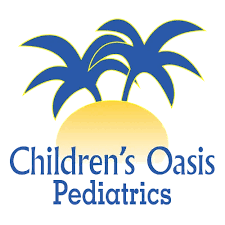Autism Spectrum Disorder
Autism spectrum disorder (ASD) is a neurologically based disability that affects a child’s social skills, communication, and behavior. Here is information from the American Academy of Pediatrics about ASD.
Autism or autism spectrum disorder (ASD) is a developmental disability that affects a child’s social skills, including how they interact and communicate with others. The term spectrum refers to the wide range of symptoms and degree to which children may be affected. For example, some children with ASD can talk, while others cannot; some children with ASD may be able to learn at the same pace as their peers with little or no assistance, while others may need assistance; and some children with ASD may be able to live on their own as adults, while others may not.How common is ASD?
ASD affects an estimated 1 out of every 44 children. This statistic is based on 2018 data from the Centers for Disease Control and Prevention (CDC) that were published in 2021. Boys (assigned male at birth) are diagnosed with ASD about 4 times more often than girls (assigned female at birth).
The number of children reported to have ASD has increased since the early 1990s, and the increase could be caused by many factors, for instance, because
-
More families are aware of ASD.
-
Pediatricians and other early childhood professionals, like child care providers, are screening for ASD more and children are being identified earlier.
-
There have been changes in how ASD has been defined and diagnosed. In the past, only children with the most severe ASD symptoms were diagnosed. Now, children with milder symptoms are being identified and referred for supports and services.
What causes ASD?
Children with ASD do not have one common cause or reason they have ASD. Many factors may lead to a diagnosis of ASD. Scientists continue to learn more about what causes ASD. We currently know that
-
Families do not cause ASD.
-
Vaccines do not cause ASD.
-
Family medical history may tell us something. If a family already has a child diagnosed with ASD, the chance that a sibling might also have ASD is 10 to 20 times higher than for the general population. Studies have shown that relatives of children with ASD are more likely to share some similar social and behavioral characteristics to those seen among children with ASD. However, these characteristics may not be severe enough to merit a diagnosis.
-
Most children with ASD do not have a specific medical condition or genetic condition that explains their ASD. However, ASD may occur more often in children with certain medical conditions or high risk factors. These medical conditions can include fragile X syndrome, tuberous sclerosis complex, Down syndrome, or other genetic disorders. Infants born preterm are another high-risk group. Considering whether a child with ASD has a genetic condition is an important part of the initial evaluation.
-
There are specific differences in brain function between a child with ASD and a child without ASD.
-
Potential environmental factors are also an important area of research and are not yet well understood.
For More Information
American Academy of Pediatrics
www.aap.org and www.HealthyChildren.org Autism Science Foundation https://autismsciencefoundation.org Autism Society of AmericaDisclaimer
Adapted from the American Academy of Pediatrics patient education booklet, Understanding Autism Spectrum Disorder (ASD).The American Academy of Pediatrics (AAP) is an organization of 67,000 primary care pediatricians, pediatric medical subspecialists, and pediatric surgical specialists dedicated to the health, safety, and well-being of all infants, children, adolescents, and young adults.
In all aspects of its publishing program (writing, review, and production), the AAP is committed to promoting principles of equity, diversity, and inclusion.
The information contained in this publication should not be used as a substitute for the medical care and advice of your pediatrician. There may be variations in treatment that your pediatrician may recommend based on individual facts and circumstances.

